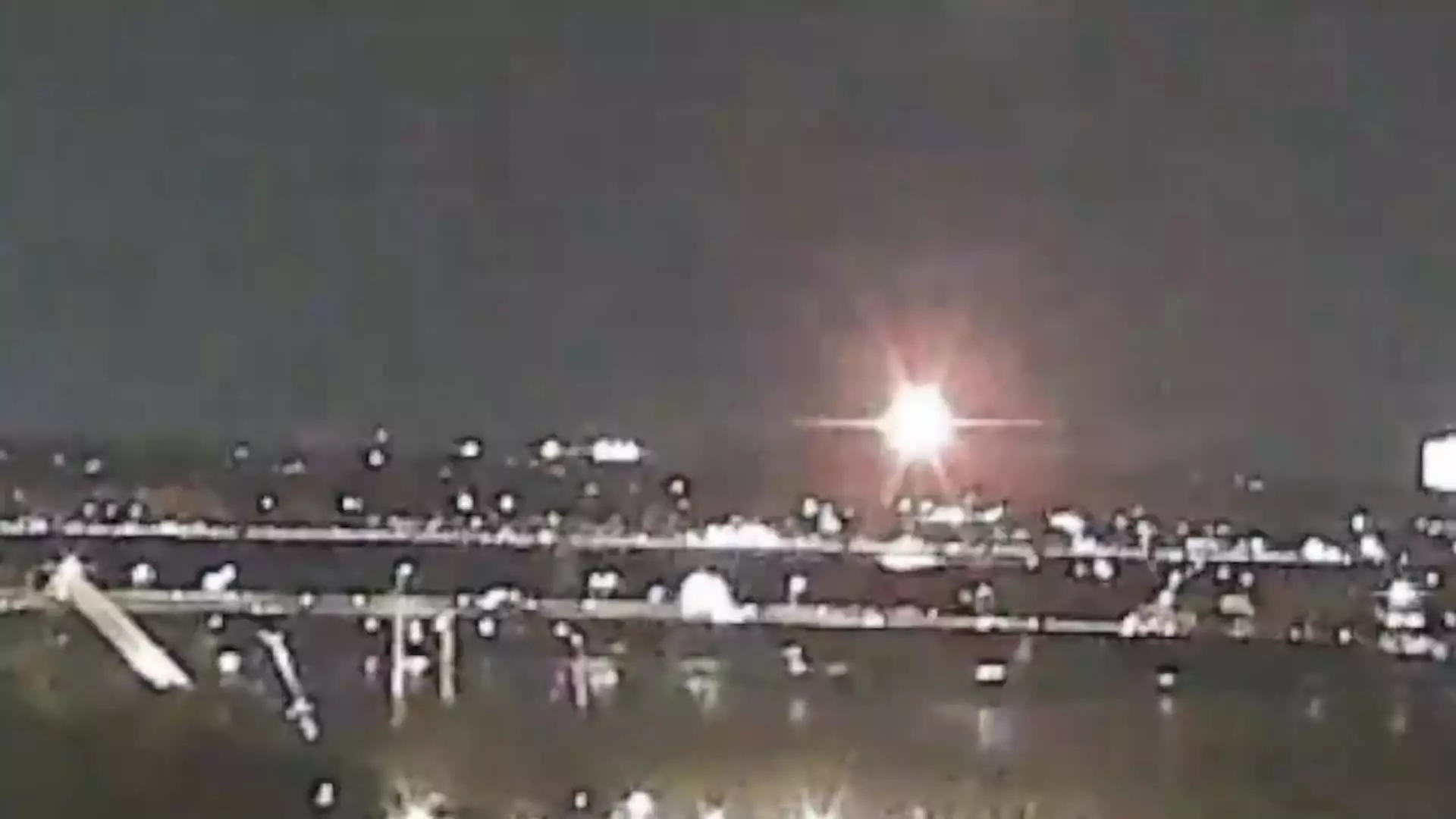On a fateful Wednesday evening, the tranquility that envelops air travel faced an unexpected disruption. A catastrophic midair collision occurred between a U.S. Army Black Hawk helicopter and an American Airlines regional jetliner, marking a grim chapter in the history of American aviation safety. This incident, resulting in multiple fatalities, has starkly illuminated the dark realities that can surface even within one of the safest modes of transportation known to mankind.
The American Eagle Flight 5342 was in the process of descending toward Ronald Reagan Washington National Airport when disaster struck. As the Bombardier CRJ700 jetline neared the ground, it collided with a military helicopter that was also in the vicinity. Onboard the commercial flight were 64 individuals—60 passengers and four crew members—who suddenly found themselves in perilous circumstances. The crash took place at an altitude of a mere 300 feet, emphasizing that danger can manifest when least expected.
In the immediate aftermath of the incident, emergency responders sprang into action, endeavoring to rescue any survivors from the frigid waters of the Potomac River. However, local authorities faced numerous challenges, including high winds that complicated their rescue operations. The gravity of the situation became apparent as officials began to share the distressing news regarding fatalities, with Texas Senator Ted Cruz indicating that, although the full scale of the loss was not yet confirmed, it was evident that lives had been claimed.
Reports indicated that rescue crews pulled bodies from the river in the hours after the crash, painting a harrowing picture of the scene. The collision marked the worst air disaster on U.S. soil in over 15 years, a statistic that underscores how rare fatal incidents have become in recent years due to stringent safety measures and regulations.
The last notable fatal commercial airline disaster in the U.S. occurred more than a decade prior—an incident involving Continental Flight 3407 in February 2009. The underlying causes of that crash led to the establishment of new regulations governing pilot training and rest periods. Such measures have made air travel significantly safer, cultivating a sense of security among travelers. Yet, with any tragic event, questions arise on how such a catastrophe could occur in an environment dominated by safety protocols.
Safety experts and officials have lauded the advancements made in air travel safety over the years. Jeff Guzzetti, a former investigator for the National Transportation Safety Board (NTSB), emphasized the overall safety of air travel—even in the shadow of this tragic event. Many experts assert that the meticulous design of overlapping safety measures has been crucial in minimizing the risks associated with aviation.
In the face of such calamity, the NTSB has launched an investigation that promises to be thorough and comprehensive. This effort will not only include scrutinizing air traffic control recordings but also examining flight data, cockpit voice recorders, and various other elements that may provide insight into what went wrong. This meticulous approach to investigation reflects the understanding that uncovering the precise causes of aviation accidents requires time and an unwavering commitment to detail.
As the investigation unfolds, lessons must be extracted to bolster the existing framework of aviation safety. The involvement of multiple stakeholders—including the Federal Aviation Administration (FAA) and crew unions—underscores the collaborative effort required to ensure accountability and foster improvements in operational procedures.
In the wake of this tragic event, there looms a critical debate on aviation safety protocols at the highest levels of government. With the recent transition of presidential administration, President Donald Trump is faced with the task of appointing a permanent head for the FAA—a crucial role in guiding future safety measures. The call for enhanced safety regulations and oversight has never been more pronounced, as the industry strives to prevent such disasters from occurring again.
The devastating collision between a military helicopter and a commercial jetliner is a stark reminder that, despite significant progress in air travel safety, vigilance is paramount. Moving forward, it will be essential to not only address the findings of the ongoing investigation but also to reassess the effectiveness of existing regulations to ensure the protection of lives in the skies.


Leave a Reply